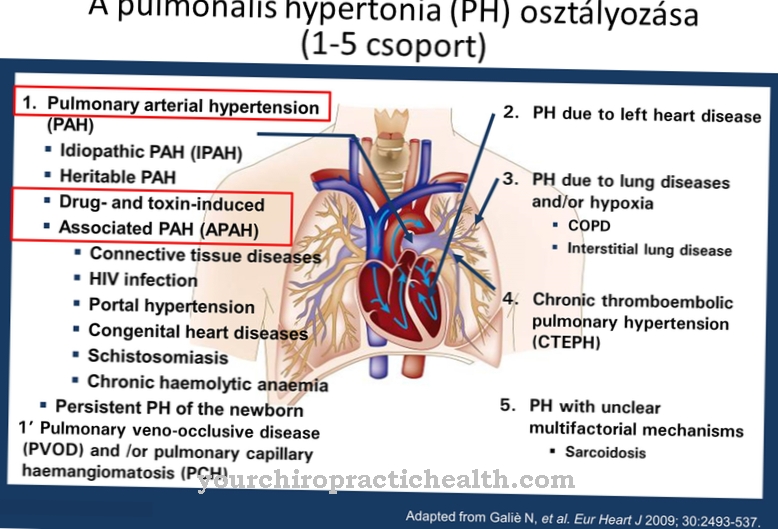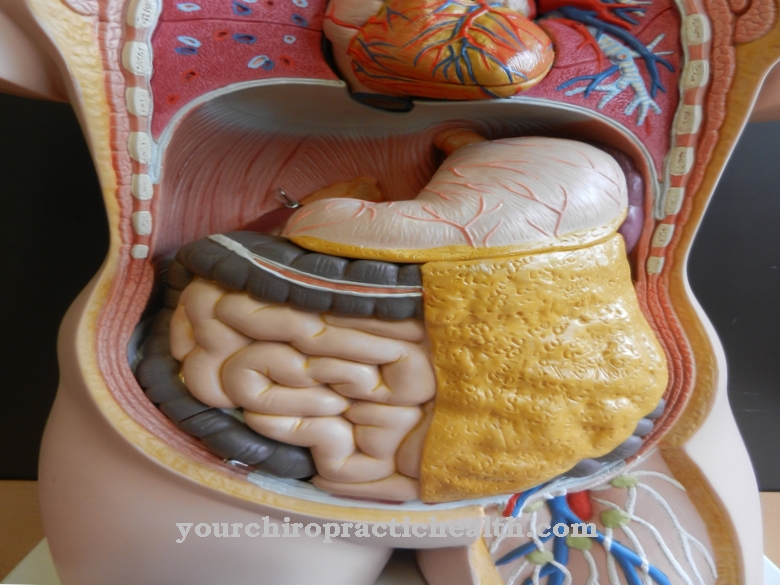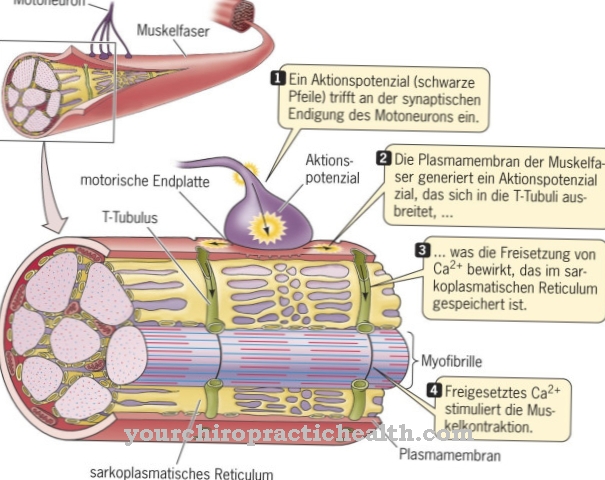The penis ends in the Glans penis - of the Acorn. The transition between the penis body and the glans is formed by the furrow (sulcus coronarius). The glans itself contains a continuation of the corpus spongiosum glandis, the urethral erectile tissue. This is also responsible for the shape of the glans.
What is the glans penis?
The term glans penis refers to the glans of a mammal's penis. The glans penis is a thickening that occurs at the front end of the male genitalia.
If the penis is not circumcised or has an erection, the glans is partially or completely covered by the penile foreskin. When an erection occurs, the glans protrudes as the foreskin retracts. If the glans cannot partially or completely displace the foreskin - even with mechanical help - one speaks of a foreskin narrowing, probably the most well-known problem that can occur in men.
Anatomy & structure
The glans or glans penis is divided into the glans edge (Corona glandis) and the glans neck (Collum glandis). In addition to the frenulum (foreskin ligament) and the inner foreskin, the glans is one of the male erogenous zones.
Above all, the lower edge of the glans is of decisive importance, as this is where most of the nerves flow. The glans skin (Cutis glandis) is a - very little cornified - squamous epithelium, which has sebum glands. The glans has numerous nerve endings; Under the epithelium there are also Meissner bodies, which are responsible for haptic perception. The epithelium is (if the penis is not circumcised) very thin, so that there are only two to a maximum of three layers of cells. Even the smallest stimuli can be perceived very strongly and intensely.
If circumcision has been carried out, the cornification can be thicker and more pronounced, so that the mechanical stimuli are perceived as less intense. The conduction of excitation - which takes place via the dorsal nerve penis - has the effect of the male orgasm and the ejaculation reflex.
The interior of the glans penis is formed by the anterior section of the corpus spongiosum penis (urethral erectile tissue); this is also known as the so-called corpus cavernosum glandis. This training is also responsible for the enlargement of the glans if an erection occurs. The training also plays a role in the direct size of the glans.
The male urethra runs inside the glans. The urethra then opens into the tip of the glans; here is also the outer urethral opening (ostium urethrae externum). The transition between the penis shaft and the glans is called the coronary furrow. In comparison to the shaft of the penis, the coronal furrow is a thickening.
In about 10 percent of all cases, men have small protruding points directly on the edge of the glans, which are described as horn tips. Those are not diseases and do not need treatment. Those horn formations are also known as "penis spines". The so-called horn tips are repeatedly confused with genital warts; those represent a disease that needs treatment.
Function & tasks
The glans, the end of the penis, is provided with numerous nerve endings. For this reason, the glans is particularly sensitive to stimuli; Finally, the nerves measure the level of arousal and the measurement is then relayed to the ejaculation center.
This is located in the human lower spinal cord. Once the arousal has reached a certain level, which - depending on the man - varies, the man experiences an orgasm and ejaculation. The glans has no other function or task; it is considered an extension of the penis. The so-called outlet for the man's urine or ejaculate is also located in the glans. That is transported through the urethra.
You can find your medication here
➔ Medicines for potency and erection problemsDiseases
Glans inflammation is one of the most famous diseases. Balanitis is usually accompanied by balanoposthitis, the so-called inflammation of the foreskin. The disease manifests itself by itching and is treated with various ointments. Whether this disease is contagious, so that the woman can also be affected by the inflammation, the doctor must determine which causes are responsible for the inflammation of the glans.
Occasionally a glans tumor can also form, which is also described as penile carcinoma. The tumor can manifest itself directly on the glans, but it can also appear directly on the penis. However, that tumor disease rarely occurs; Only in the rarest of cases do such tumors occur directly on the man's glans. Whether the tumor is malignant or what course of the disease is to be feared can only be determined individually by the doctor, as there are different forms and outgrowths, so that no general assessment can be made.
Phimosis is also one of the most well-known "diseases" that can occur in a man in the context of the glans. Here one speaks of the so-called "foreskin narrowing". This can occur as early as infancy or infancy, but can also manifest itself over time (due to several causes). Phimosis is usually treated surgically, with different types of circumcision (complete circumcision or partial circumcision).
Circumcisions that take place as part of religious processes and rituals have nothing to do with a foreskin constriction. Here the ritual or hygiene is in the foreground.
Typical & common penile diseases
- Erectile dysfunction (erectile impotence)
- Potency problems
- Premature ejaculation
- Congenital penile curvature
























.jpg)



